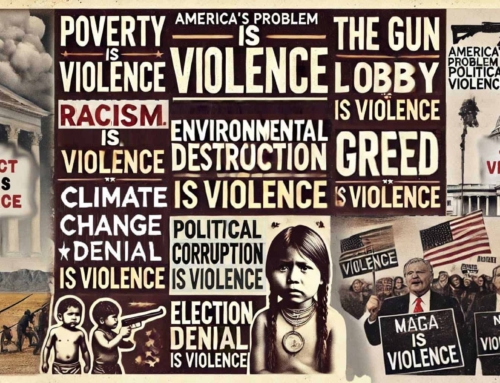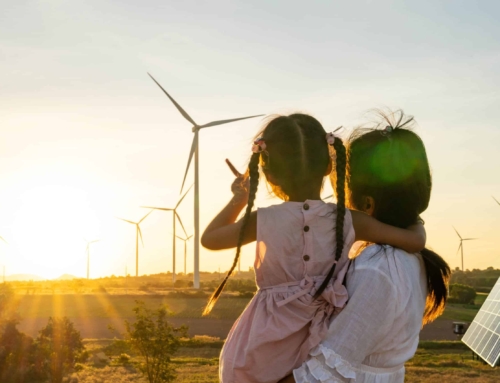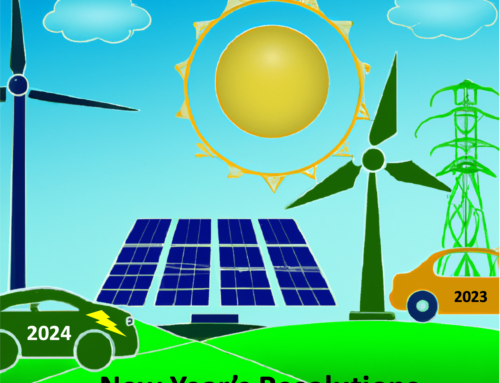I’ve seen dozens of climate and environmental campaigns over the last 10 years. Almost every one falls into the issues trap.
It’s the tactic of fighting a climate or environmental problem with facts and reason, rather than calling out the underlying violation of our values and telling a story. Here’s what happens.
Some fossil fuel company wants to put in a new pipeline through local tribal lands, or build a dirty methane-fueled power plant. Or destroy a forest, or dig a new mine. Ad infinitum.
As well-meaning climate and environmental activists, we start a campaign to stop the action.
First we try to make everyone aware of what’s happening and get them to do something, like call their legislators. We catalyze this action by creating anger around the issue. We make a list of facts and reasons the issue is bad. Our solution is to stop the pipeline, power plant, lumbering or mine. We are successful one in ten times.
Just as we’re licking our wounds, guess what? Some other environmental travesty pops up. It feels like Groundhog’s Day all over again. How do we stop this cycle?
The first step is to understand why issues-based campaigns don’t always work. Of course the particular issue is important. But when we focus only on our issue, our next natural step is to create a list of reasons and facts about that issue. Our outrage captures attention. Then we tell people what to do. Here’s why this fails.
Not many humans on earth make a decision or act based on a fact or a reason!
Repeat. Not many humans on earth make a decision or act based on a fact or a reason! We just think we do.
This is a bigger discussion, but if you don’t believe me, just think of the last argument you had with your spouse, partner, parents or kids? I’ll bet you, all those reasons didn’t help you one bit. That’s because we often use facts and reason to justify the decisions we’ve already made with our gut. Cognitive scientists say that arguing facts actually entrenches the position of others, rather than change their minds.
Arguing, mansplaining, or fact citing is also a form of telling. (This post excepted.) When was the last time you liked being told what to do? But we can’t resist. Because we are so angry.
Why do you think the last administration was so successful with “alternative facts”? It was because facts don’t really matter in convincing people. (Please, no comments about law and science, we are talking about persuasion.) Something more powerful did.
People act when they are attracted rather than persuaded. We are most often attracted when our identity is re-enforced. We identify with people who hold similar values. So if my values system is based on empathy, fairness and inclusion, I am more likely to support stopping the Line 3 pipeline because of its impact on Black, Indigenous, or People of Color. I support action based on my identity. My identity is reinforced by other climate activists. It is the violation of our core values that brings us together, not the particular issue.
There are people in the middle of every issue who share some of our values and some of the opposition’s. It’s our job to activate our values in these people.
We discover these values when we tell stories. Stories share values. Telling me a story about why you are passionate about climate will make me want to support your efforts against the current pipeline effort more than any list of facts and reasons. I want to know why you care.
A story about how a hard working farmer had his land taken by a foreign pipeline company through eminent domain, shows the violation of the value of fairness. Or only when we tell a story of Missing and Murdered Indigenous Women do people identify with the thought of losing a loved one due to a pipeline. Then we actually feel the loss through the violation of the value, in this case, the sanctity of all life. Don’t underestimate empathy.
Issues-based campaigns lead to reasons and arguments. This is the what. Values-based campaigns are the why. Stories activate values in others and create a shared identity. So for our next campaign, let’s skip the fact sheets and think about the story we want to tell.
Then we also need to do one more thing. Create a vision of a better world and solutions. In an issues based campaign, stopping that issue is the solution. That’s never enough. We must also create a vision or the story of the way the world can be. Imagine a world where breathing clean air is a right, where pure water and food security are provided for all, and our children have a secure future.
Thanks.
Hobie,
‘We are all connected. Savor the Earth!’™
Hobart Stocking
SkyWaterEarth.com
hobart@skywaterearth.com
651-357-0110
Facebook: @SkyWaterEarthConnected
Twitter: @SkyWaterEarth








Leave A Comment